Having used digital cameras for more than 15 years, about 3 years ago I got into contact with film cameras again. This started a search for my next film camera, which eventually became a Leica M4-P. I will describe my search and the considerations for selecting a Leica rangefinder in this blog post.
Reconnecting with film
I had been shooting film when I was in my twenties (about 30 years) ago, but when digital came along, I soon switched.
My wife owns a Rolleicord Vb, which she was prepared to lend to me. I soon fell for the process of taking analog photographs. The focus and attention that needs to be paid to taking analog photos is very different from digital. The number of images on a roll of film are limited and therefore, much more thought goes into taking a photo with an analog camera.
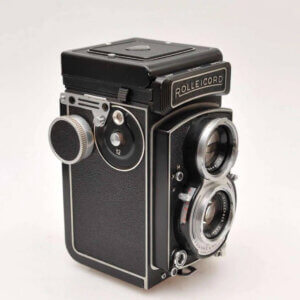
So, soon came the thought to get a film camera of my own. Of course, I could have borrowed the Rolleicord from my wife permanently, but being a street shooter I find the this camera a little bit too clumsy to use in the street. Since 2013 I switched from Nikon SLR and have been a Fuji shooter.
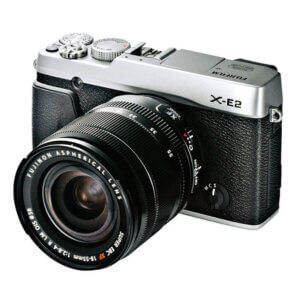
I have been using a Fuji X-E2 as my main camera, which has a rangefinder type body. Very capable camera and great for using in the street and when travelling.
Starting the search
So, when looking for a film camera body, I would be looking for something similar as my Fuji X-E2. A rangefinder camera would fit that requirement perfectly. So, there started my search for the perfect film body to complement my digital X-E2.
My first thought was for a simple Olympus Trip camera. Though officially not a rangefinder camera, the body fitted my purpose and it has a great reputation.
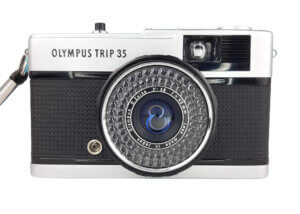
The camera is very well built. It has fully automatic exposure and requires no batteries due to the selenium cell around the lens. As long as the cell works, the automatic exposure works. The camera is very affordable for around € 150 you will be able to buy one in a good condition and working order.
Olympus 35SP
On my search for an Olympus Trip, I stumbled upon an Olympus 35SP, which has very good reviews. This is a true rangefinder camera, with a better lens than the Olympus Trip.
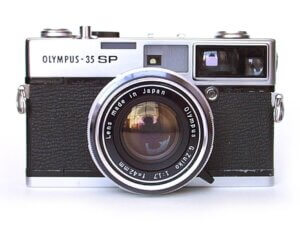
Still a fixed lens solution, but with a quality 42mm lens this just might be the ticket. For around € 200 you can get a version in working order.
The 35SP provides fully automatic light metering as well as manual override. The downside for me was that the light meter uses EV values when metering the light. You then have to manually set a shutter speed and aperture combination that results in this EV value. This is a system that has now been long abandoned my camera manufacturers and is considered very cumbersome.
Moreover, the 35SP uses a battery that is not being manufactured anymore. There are some alternatives to this, but for me this was an additional No Go aside from the light meter characteristics.
After this, I briefly looked at the Canon Canonet QL17, but having the same battery issue as the 35SP, I decided against it.
Turn to Leica
Of course, when you talk rangefinder, you have to look at Leica as well. They are inventor of the 35mm format and produced rangefinders ever since the first Barnack Leica. There is a lot of history there and, I have to admit, their cameras are beautiful. Though for obvious reasons not the most important part when choosing a camera, looks do matter (at least to me).
The traditional Leica approach towards photography also has a lot attraction to me. By stripping away everything that distracts from actual photography you get to the essence of it. Or ‘Das Wesentliche’ as they call it in Wetzlar, Germany. Leica M rangefinders have manual focus lenses only and their classic film cameras have one button only besides the shutter itself: shutter speed, while aperture is set on the lens. You can’t get more basic than that. And talking about lenses: any lens that was ever produced for a Leica M system can still be used on the most modern digital Leica M as well. This means that every M-mount lens produced since the 1950s is available for your system, even when you decide to go digital with Leica.
Lenses
Obviously, Leica has produced a lot of great lenses, but also manufacturers like Voigtländer and Zeiss have a great set of lenses for Leica M. More recently, a number of good manufacturers from China are producing decent lenses for Leica M.
So, this opened up the opportunity to choose the Leica system, initially for film, but any lens that I would be buying could be used on a digital M as well, should I choose to go for that.
Furthermore, the Leica M comes in a small body that was made for street and travel photography. We are ticking a lot of boxes here…..
Price
Yet, there is the elephant in the room: Leica is expensive. A used Leica classic film camera is priced at a minimum of € 1.500 – € 2.000, without a lens. New film cameras from Leica are in the price range of € 4.500 – € 5.000. Hefty price tag.
On the other hand, if a camera from the 1950s/1960s still goes for around € 1.500, this means that a 60 year old camera still holds its value after such a long time. A Leica M6 from the 1980s is still priced around € 3.000 after around 30-40 years.
So, my conclusion is that even though Leica’s are considerable more expensive than other film cameras, they can still hold their value after a long period of time. This would allow you to look at buying a Leica as an investment that you may get back or maybe even make a small profit on. That makes it a different ball game. Still, you need to have a fair amount of cash lying around that you do not need immediately to be able to buy a Leica camera.
Knowing this, we can have a look which Leica M we would like to purchase.
Choosing a Leica M
There are a couple of aspects to consider here:
Light meter.
Up until the Leica M4-P, Leica’s did not have a built-in light meter. From the M6 onwards, all Leica film cameras include a light meter.
Framelines.
Different Leica’s have different framelines to support different lenses. The most extensive support you can get is framelines for 28mm, 35mm, 50mm, 75mm, 90mm and 135mm lenses. Especially older Leica’s (M4 and downwards) do not support all the framelines.
Film loading mechanism.
From the Leica M4 onwards the so-called quick film loading mechanism is built into the camera. This prevents you to have to remove the take-up spool from the camera when inserting a new film. With the quick load mechanism you simply slide the new film into the back and insert the leader into take-up spool.
Rewind crank or rewind knob.
The rewind crank is found on all more modern film cameras from any brand to rewind the film. Earlier Leica’s use a rewind knob that you have to turn to rewind the film. This is a matter of preference, but there is certainly a difference.
Viewfinder magnification.
There are various viewfinder magnifications, depending on camera model. Some models like the M6 and M7 have different viewfinder magnifications. I have listed the most common ones in the table below.
Framecounter.
Some older Leica M models require you to manually reset the frame counter when inserting a new film. Most Leica Ms support automatic reset by the way.
Self timer
Older Leica M models have a self-timer that was abandoned at some point in time.
Hot shoe
Later Leica M models have a hot shoe, that enables you to sync a flash with the camera.
Price.
There is certainly a difference in price between an M6 and and M3 or M4-P. Prices mentioned in the table below will fluctuate for obvious reasons and are merely an indication.
Comparison
| M2 | M3 | M4 | M4-2 | M4-P | M5 | M6 | M7 | |
| Light meter | No | No | No | No | No | Yes | Yes | Yes + Aperture Priority |
| Framelines | 35, 50, 90 | 50, 90, 135 | 35, 50, 90, 135 | 35, 50, 90, 135 | 28, 35, 50, 75, 90, 135 | 35, 50, 90, 135 | 28, 35, 50, 75, 90, 135 | 28, 35, 50, 75, 90, 135 |
| Film loading | Take out spool | Take out spool | Quick loading | Quick loading | Quick loading | Quick loading | Quick loading | Quick loading |
| Rewind | Knob | Knob | Crank | Crank | Crank | Crank (on bottom) | Crank | Crank |
| Viewfinder | 0.72 | 0.91 | 0.72 | 0.72 | 0.72 | 0.72 | 0.72 | 0.72 |
| Framecount | Manual | Automatic | Automatic | Automatic | Automatic | Automatic | Automatic | Automatic |
| Self-timer | Yes | Yes | Yes | No | No | Yes | No | No |
| Hot shoe | No | No | No | Yesy | Yes | Yes | Yes | Yes |
| Price | € 1.200 – € 1.500 | € 1.300 – € 1.700 | € 1.400 – € 1.800 | € 1.500 – € 1.900 | € 1.600 – € 2.200 | € 1.400 – € 1.600 | € 2.400 – € 3.200 | € 3.000 – € 4.000 |
There are some other more detailed differences between these cameras, but these are the aspects that I took into account when selecting a Leica film camera.
The decision
The most important aspect of my decision were the framelines. I did not want to limit myself on lens selection, so I would like to be able to use the full range of 28mm – 135mm on my camera. I naturally like to shoot 35mm or 50mm, so why limit yourself?
This resulted in the M4-P, M6 or M7 as the likely candidates. Bonus for me was that from that from the M4 onwards, the quick loading mechanism is present on the Leica M, which to me seems a lot easier to load film than taking our the take-up spool when you need to load new film out in the street. I also like the crank film rewinder better than the rewind knob on older models.
I never use the self-timer on any camera, so the absence of that is not an issue.
Then a tough decision: do I need a light meter or not? When I want a light meter, this immediately puts me into the more expensive segment of the M6 or M7. The M5 is out of the question because of limitations regarding framelines and also the fact that the M5 is a different camera altogether: it is much bigger than the traditional M. This kind of defeats the purpose for me choosing a Leica M.
The final stretch
So, the final part of my decision it really came down to price. When I choose a cheaper model, would I be able to shoot without a light meter? That seemed a challenge in itself, so I started reading about Sunny 16 and external light meters. I began to like the idea that part of the Leica film tradition, integrated light meters were not available at all for a very long time. It was not until the 1970s/1980s when these came to appear. Having never used a rangefinder before, I hesitated to go full in with a really expensive model. Besides, the M4-P is really the same camera as the M6, but without a light meter.
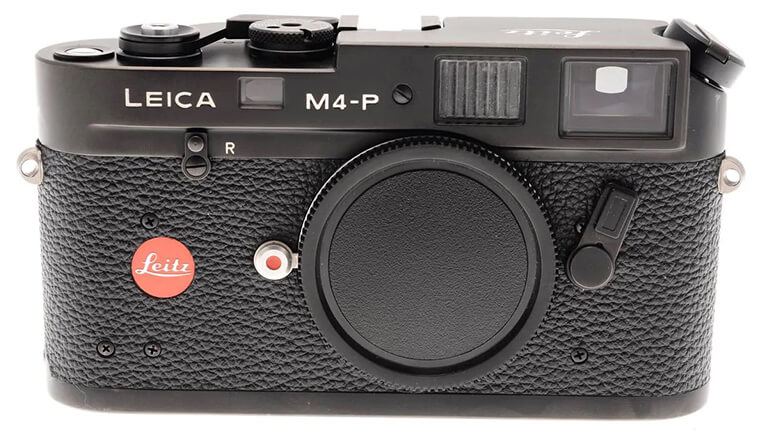
So, I decided to go for the M4-P. Not a cheap camera by any means, but in the Leica world it was available for an acceptable price. Given the fact that Leica film cameras hold their value for a longer period of time, I would be able to sell again should a rangefinder not the camera for me.
Want to know how I coped with not using a light meter? Read this article on Pixels & Film!
Buying new Leica M film cameras
Of course, there is always the option of buying a new Leica M film camera. There is the Leica M-A (fully mechanical, no light meter) and the Leica M-P (with light meter) and recently Leica took a new version of the Leica M6 into production again. Be prepared to pay a substantial amount of money for these beautiful cameras!
Leave a Reply